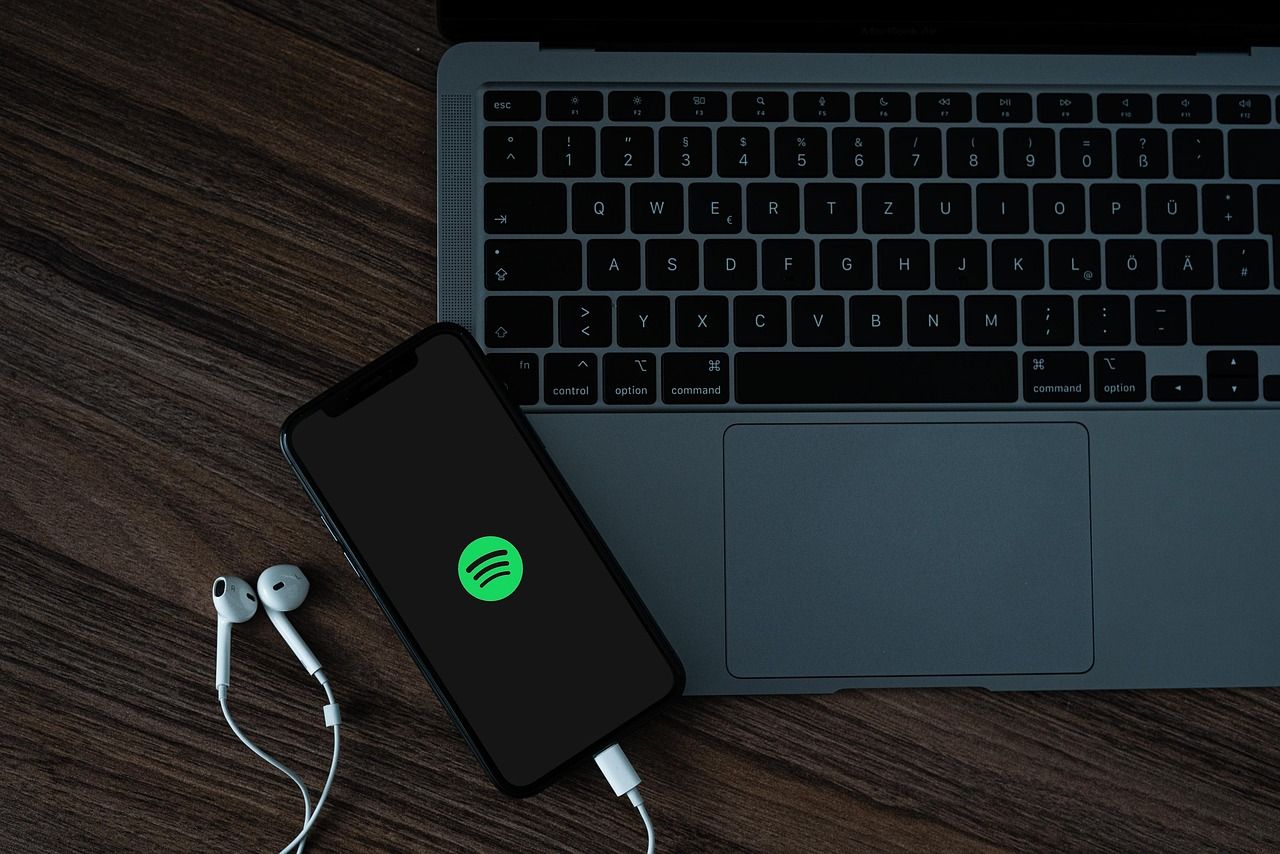Spotify, one of the world’s leading music streaming platforms, offers various ways for artists to make money. With millions of users worldwide, it provides a massive audience for musicians to monetize their music. This blog will explore how does Spotify make money for artists and the different revenue streams available to them.
Understanding Spotify’s Revenue Model
Spotify operates on a freemium model, which includes both free and premium tiers. The free tier is supported by advertisements, while the premium tier requires a subscription fee. The revenue generated from these sources is then distributed to rights holders, including artists, record labels, and publishers.
How Artists Earn Revenue from Spotify
1. Streaming Royalties
Streaming royalties are the primary way how artists earn revenue from Spotify. Each time a user streams a song, the artist earns a small amount. The payment per stream varies depending on several factors, including the listener’s location, whether the listener is a free or premium user, and the artist’s agreement with their distributor or label.
Spotify calculates royalties based on a pro-rata model, which means that the total revenue generated is divided by the total number of streams on the platform. Artists then receive a portion of this revenue based on the number of streams their songs have accumulated.
How Spotify benefits artists financially through streaming royalties is significant, although the per-stream payout may seem small. With a large number of streams, artists can accumulate substantial earnings.
2. Ad-Supported Revenue
For free-tier users, Spotify includes ads between songs. The revenue generated from these ads is another way how musicians make money through Spotify. A portion of the ad revenue is allocated to artists based on the number of times their songs are streamed.
Spotify’s premium subscription model is another source of income for artists. When users pay for a premium subscription, a portion of this revenue is distributed to rights holders. This model tends to pay more per stream compared to the ad-supported model, providing a more stable income stream for artists.
Factors Affecting Earnings on Spotify
Several factors influence how artists earn revenue from Spotify:
- Number of Streams: The more streams an artist gets, the higher their earnings.
- Listener’s Location: Different countries have different payout rates.
- Type of User: Streams from premium users typically pay more than streams from free-tier users.
- Distribution Agreement: The terms of the artist’s contract with their label or distributor affect their earnings.
Maximizing Revenue on Spotify
How Spotify benefits artists financially can be maximized through various strategies:
1. Building a Fanbase
A strong fanbase increases the number of streams, which directly impacts revenue. Artists should engage with their fans on social media, release new music regularly, and promote their Spotify profile to encourage more streams.
Engaging with fans can involve sharing behind-the-scenes content, hosting live sessions, and interacting through comments and messages. Creating a strong personal connection with fans can lead to increased loyalty and more frequent streams.
2. Playlists and Curated Content
Getting featured on popular Spotify playlists can significantly boost an artist’s streams. Playlists have a large number of followers, and being included in a curated list can expose an artist’s music to a broader audience.
To increase the chances of being featured on playlists, artists can submit their songs to Spotify’s playlist submission tool. Additionally, building relationships with independent playlist curators can help in getting more exposure.
3. Engaging with Spotify for Artists
Spotify offers tools like Spotify for Artists, which allows musicians to manage their profile, analyze streaming data, and promote their music effectively. Utilizing these tools can help artists understand their audience better and optimize their strategies to increase streams and revenue.
Spotify for Artists also provides insights into which playlists are driving the most streams, which cities and countries have the highest listener concentrations, and demographic data about the audience. This information is invaluable for planning tours, targeting ads, and creating marketing campaigns.
Additional Revenue Streams
Besides streaming royalties, how does Spotify make money for artists can also include:
1. Merchandising
Spotify has integrated with platforms like Merchbar, allowing artists to sell merchandise directly through their Spotify profiles. This provides an additional revenue stream and helps artists engage more deeply with their fans.
By offering merchandise such as T-shirts, posters, and vinyl records, artists can capitalize on their brand and create additional income streams. Merchandise sales can also enhance the fan experience by offering exclusive and limited-edition items.
2. Crowdfunding and Fan Support
Spotify has also introduced features like the Artist Fundraising Pick, which allows fans to support their favorite artists directly through donations. This feature is especially beneficial during times when live performances and tours are not feasible.
Artists can link to their preferred fundraising platforms, such as GoFundMe, PayPal, or Cash App, making it easy for fans to contribute. Promoting these fundraising efforts on social media and through email newsletters can increase the likelihood of fan support.
3. Exclusive Content and Collaborations
Offering exclusive content or collaborating with other artists can attract more listeners and increase streams. Exclusive releases can create a buzz and drive more traffic to an artist’s profile, enhancing their overall earnings.
Collaborations can include joint singles, remix projects, or even co-hosted live sessions. These collaborations not only introduce artists to new audiences but also keep existing fans engaged with fresh content.
Challenges and Considerations
While Spotify offers significant opportunities for artists to make money, there are challenges and considerations to keep in mind:
1. Low Per-Stream Payouts
One of the most common criticisms of Spotify is the low per-stream payout. Although the platform has a vast user base, the earnings per stream can be minimal. Artists need millions of streams to make substantial income.
2. Competition
With millions of tracks available on Spotify, competition is fierce. Standing out requires strategic marketing, consistent engagement with fans, and high-quality music.
3. Royalties Split
Artists often have to share their royalties with labels, distributors, and other stakeholders, which can significantly reduce their take-home pay. Understanding the terms of these agreements is crucial for maximizing earnings.
The Future of Spotify for Artists
Spotify continues to evolve, introducing new features and tools aimed at helping artists maximize their earnings. Initiatives like Spotify’s Creator Fund and enhanced analytics tools are designed to support artists in growing their careers and making more money from their music.
1. Enhanced Analytics
Spotify is investing in more advanced analytics tools that provide deeper insights into listener behavior. These tools can help artists tailor their marketing efforts, plan tours more effectively, and understand the preferences of their audience.
2. Direct Artist Support
Spotify is exploring more ways to provide direct financial support to artists. This includes expanding fundraising tools and offering grants or advances to help artists create and promote their music.
3. Improved Fan Engagement Tools
New features aimed at enhancing fan engagement are regularly being tested and rolled out. These include interactive playlists, virtual events, and exclusive content offerings that help artists connect with their audience in innovative ways.
Tips for Artists to Increase Their Spotify Earnings
1. Optimize Your Profile
A well-optimized profile can attract more listeners. Ensure that your profile picture, bio, and links are up-to-date. Use the artist’s pick feature to highlight your latest release or a playlist that features your music.
2. Release Music Regularly
Consistently releasing new music keeps your audience engaged and can lead to more frequent streams. Plan a release schedule and stick to it, whether it’s singles, EPs, or full albums.
3. Promote Your Music
Promote your Spotify profile and releases on all your social media platforms. Use tools like Spotify Codes to make it easy for fans to find and stream your music. Collaborate with influencers and music bloggers to increase your reach.
4. Leverage Data
Use the data available on Spotify for Artists to understand your audience better. Identify which songs are performing well and which markets are most responsive. Use this information to tailor your promotional efforts.
5. Engage with Your Audience
Engage with your listeners through Spotify’s tools and social media. Respond to comments, host Q&A sessions, and share behind-the-scenes content to build a stronger connection with your fans.
6. Submit to Playlists
Submit your music to Spotify’s editorial playlists and reach out to independent playlist curators. Being featured on playlists can significantly boost your streams and attract new listeners.
7. Monetize Beyond Streaming
Explore additional revenue streams such as merchandise sales, live performances, and fan funding. Use your Spotify profile to drive traffic to these opportunities and diversify your income sources.
Conclusion
Understanding how does Spotify make money for artists is crucial for musicians looking to leverage the platform effectively. While the earnings per stream may be low, the potential for reaching a global audience and multiple revenue streams makes Spotify an essential tool for artists.
By building a strong fanbase, engaging with Spotify’s tools, and exploring additional revenue streams, artists can maximize their earnings and benefit financially from Spotify. Despite the challenges, the platform remains a powerful avenue for artists to monetize their music and achieve success in the digital age.
For further reading, explore these related articles:
- How to Get Verified on Spotify: A Comprehensive Guide
- Platform-Specific Guidelines for Cover Art: Apple Music and Spotify
For additional resources on music marketing and distribution, visit Deliver My Tune.






